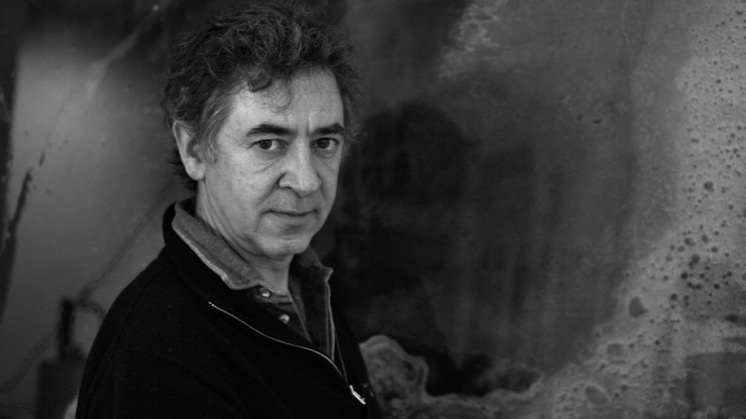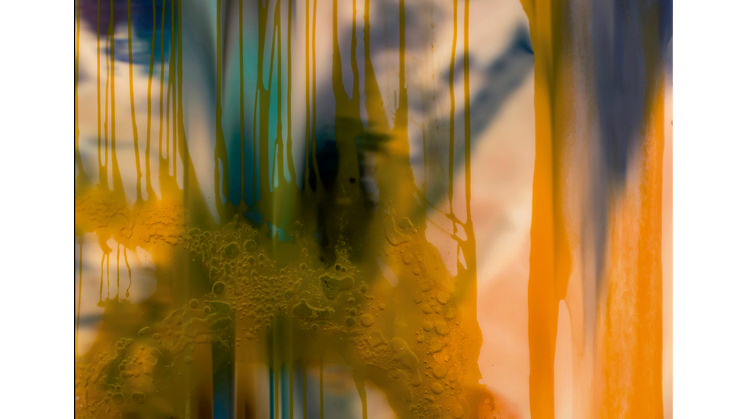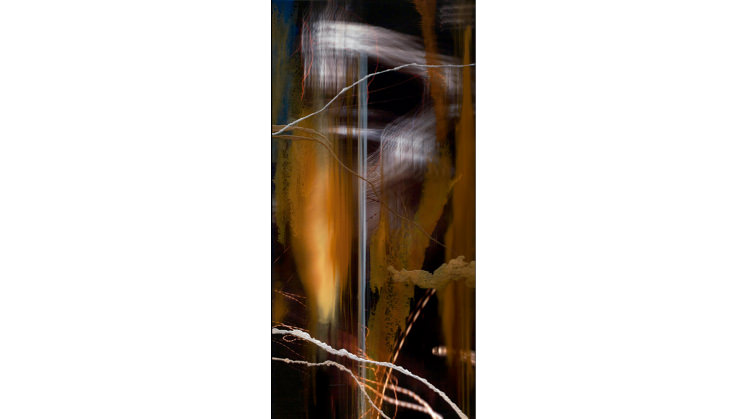Interview with Dario Urzay
"Art will always be there because we artists can always create and we are always creating"
Society Arts Corporate social responsibility Interviews
May 2020. Reading time: 6 minutes
The Basque artist Darío Urzay is not hiding his concern over the impact of COVID-19 on the world of culture in general, and on the art world in particular. Nevertheless, he paints an aura of hope and he certainly believes in artists' capacity for survival: "Things are always going on in our heads and sometimes a sheet of paper and a pen are all we need to start something."

Darío Urzay (Bilbao, 1961), one of the artists in the Iberdrola collection External link, opens in new window., likes investigating, exploring and experimenting, which is why, as he admits in this interview, he considers himself more of an inventor than a painter. That restless attitude towards life and art has led him to create "complex hybridisations” that build up a personal imaginary that he has nurtured and matured over decades. We delve into the past to go over his career, but also into the future, to learn of his thoughts on how COVID-19 will hit the world of art.
External link, opens in new window., likes investigating, exploring and experimenting, which is why, as he admits in this interview, he considers himself more of an inventor than a painter. That restless attitude towards life and art has led him to create "complex hybridisations” that build up a personal imaginary that he has nurtured and matured over decades. We delve into the past to go over his career, but also into the future, to learn of his thoughts on how COVID-19 will hit the world of art.
Let's start by looking back - what sparked Darío Urzay's interest in art?
I started at the age of about 11 or 12, like every other child, painting with oils, but I gave up painting for a while. At 17, I took it up again and did a series of watercolour landscapes that I submitted to painting competitions in Spain. I won several national watercolour prizes, in competition with people who were already professionals.
I began with art that some people have called hyper-realistic, but it soon developed in the abstract direction. What brought about this change?
My first public appearance was in Bilbao in 1977 at the Bienal Vasco Navarra de Pintura with a picture that was definitely in the hyper-realistic style. I had started studying Fine Art just a month earlier. Years later I got the chance to go to London at the invitation of the Delfina foundation, which had just started. I went with Txomim Badiola and the year we spent there was fundamental for my career and for the change. Back in Bilbao, I started producing a type of art that was more expressionist, with pictures created by encaustic painting.
"It is in my nature to investigate, explore and experiment, and I have always considered myself more of an inventor than a painter"
These days, when people refer to you as a painter, are you comfortable with this definition or do you feel that there are others that more closely describe you and your work?
When anyone asks me how I would define myself I usually say as a plastic artist because I have done a lot of other things besides painting. Recently, for instance, I've sent two videos to the Moscow Pushkin Museum because they have invited me to join a big international project on the Internet. Painter? It doesn't bother me, but if I had to say something it would be plastic artist.
Throughout your career you have explored and gone down many roads. What inspires you to innovate and seek out now forms of expression?
It is in my nature to investigate, explore and experiment, and I have always considered myself more of an inventor than a painter. I have always felt the need to demonstrate something and to do it in the most appropriate way available. So sometimes I've used photography, video, 3D models, etc.
You've always seemed interested in the dialogue that arises between the work and the observer. Your works have been exhibited halfway around the world over the past decades. Do you think that the time and place where they are viewed has an influence on that dialogue?
Fortunately, I have exhibited in many places around the world and yes, the place where my works are viewed does have a big impact on the dialogue. Art is, in turn, always an adaptation to the surroundings. New York, for instance, was a totally different environment from mine, and in the end you have to adapt, and art helped me to make that adjustment. The videos for the Pushkin Museum that I mentioned earlier were done in lockdown — no travelling, no going anywhere — and that influenced me to produce a particular kind of work.
"My works are hybrids, because I believe that everything in life is a hybrid. Reality is always much more banal that the world of ideas"
Photography is fundamental in your artistic process. What drew you to this art form and led you to integrate it into your works?
Photography is a great medium, and it has had a major impact on society ever since it was invented. For me, going beyond photography, the world of the image is fundamental. It can appear pictorially, as a photograph, or temporarily in the form of a narration sequence. Pictures are very important these days, and pictures make society.
Today's world is marked by technology, something that you also integrated into your work some time ago. What is your opinion about its growing influence on our lives?
Technologically, the world has seen big changes since the 19th century, which was a century of revolution. By the 20th, with the appearance of television and computers, the world has become a different one. The world has not grown progressively, but exponentially. What will happen in the next 20 or 30 years? Look how mobile phones have evolved in recent years. Now we have a supercomputer in our hands. We are totally driven by technology.



Your works are usually described as "complex hybridisations". Could you explain this as applied to some of the works you have in the Iberdrola collection? D88L0869 (2006) or Night-time passage (2011)?
Yes, my works are hybrids, because I believe that everything in life is a hybrid. Purity and essentiality are things that belong to a classical, almost ideal, era, and I don't have much belief in ideal things. Reality is always much more banal that the world of ideas. Complex hybridisations means that they are not simple and direct works, but rather that they have their peculiarities when it comes to approaching and creating them. In those works I was fascinated not by how the Iberdrola Tower was being built, but by watching it grow. From my window I could see how little by little a skeleton was appearing in the space.
Iberdrola, as well as having an extensive collection, supports art through various initiatives. Can we consider big business as being one of the 21st century's great patrons?
Yes, Iberdrola is one of the few patrons at business level and we should be very grateful that a company of its stature is making the effort to have its own collection. There may well be other initiatives that could be put forward and attract some interest at business level.
"It's going to be hard for those of us who live exclusively from our work, but we'll have to reinvent things and look for ways to move forward"
Going back to what we were talking about earlier, how have you coped with the COVID-19 lockdown? Has it affected your creative process?
The coronavirus crisis caught me locked down with two small children at home who I had to look after and help with their schooling. My wife was working in an Intensive Care Unit, so it's been difficult. Despite not going to the studio and being inactive, my head can't stop coming up with ideas, so even though it was just from one small room, some ideas popped up that I think will be useful for the evolution of my future work.
The repercussions of the coronavirus crisis at the socio-economic level are going to be severe, with the culture and art sector perhaps one of the worst hit. How do you see the situation: with optimism or pessimism?
Sadly, I have a feeling that we're going to be suffering a major crisis. Artists, actors, and the world of culture in general are going to be experiencing very, very hard times. On an existential level I see it with optimism and on a financial level, with pessimism. It's going to be hard for those of us who live exclusively from our work, but we'll have to reinvent things and look for ways to move forward. The world of the galleries for example has very much come to a standstill at the moment and, although it's bound to get going again, this crisis is also going to affect the collectors. In any case, art will always be there because we artists can always create and we are always creating. Beyond physical space, things are always going on in our heads and sometimes a sheet of paper and a pen are all we need to start something. I hope everything blows over and that in time we will look back on this spell as something we learned from.




